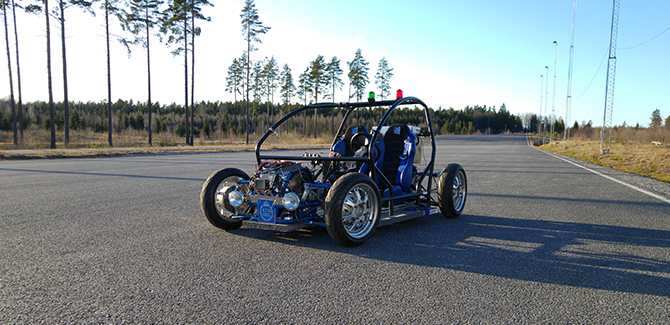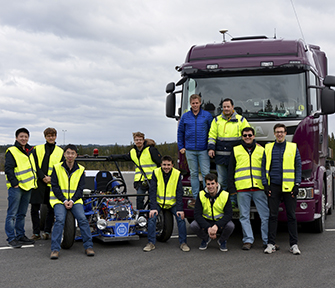KTH placed high in competition of cooperative and automated driving
During the weekend of 28 and 29 May 2016, the city of Helmond was the centre of an international event in the field of cooperative driving: the Grand Cooperative Driving Challenge (GCDC). Out of ten student teams from six European countries, KTH scored a place in the top three.

Road traffic continues to face significant challenges regarding congestion, traffic safety and emissions. The combination of vehicle automation (making it self-driving) and vehicle-to-vehicle and vehicle-to-infrastructure communication may provide a solution to some of these issues. To enable these improvements, vehicle-to-vehicle cooperation is only possible if we can agree on what we want to communicate with each other and when we do it. That is precisely the aim of the i-GAME: to prove a basis for cooperative automated driving in an international context.
The GCDC 2016 was one of the highlights of the i-GAME project, a European research project, supported by the European Commission, in which the next step towards the cooperative automation of vehicles are taken. The purpose of the competition was to demonstrate a combination of vehicle automation and vehicle-to-vehicle and vehicle-to-infrastructure communication.

Ten student teams from six European countries competed for the most points for best performance in cooperative and autonomous driving. KTH had two vehicles in this year's competition: a Scania truck and the KTH Research Concept Vehicle which was built and maintained by the Integrated Transport Research Lab, ITRL.
“Working with a prototype vehicle like the RCV, can lead to many adventures and technical challenges”, says Stefanos Kokogias, research engineer at ITRL and project leader for the GCDC. “A few days before the competition, we realized that one of the steering wheels was not properly actuated which was a problem than needed immediate solution. In another case the Battery Management System was burned and we had to drive to Germany to get a replacement in time.”
The competitions, including safety tests, went on for two weeks. In the end, KTH came in third place with ton of their competing vehicles.
“It was a very intense experience with all the teams struggling to prepare their systems to cooperate with others. Unfortunately, the RCV could not participate in the end due to a number of technical issues that we had. But our team won the 3rd prize for our participation with the truck and that is a great result for us”, says Kokogias.
For further information contact:
Stefanos Kokogias, research engineer at ITRL,
kokogias@kth.se

